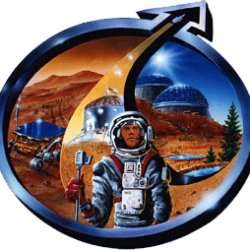[title End-Mission Research Report – March 22nd]
[category science-report]
Crew 309 Mission Science Report
MDRS, Saturday 22 March 2025
Name of person filing report: Aaron Allred
Overview: Crew 309 has been in the MDRS for one week, conducting a pilot
experiment within the research domain of aerospace human factors research. Due to
the nature of these experiments, the six-person habitat crew has remained naïve to
the experiment objectives, which have been coordinated by a separate three-person
experimental team stationed in nearby Hanksville, UT while running remote
operations by day out of the science dome.
In particular, our primary experiment examined how aspects of teams, confined to an
isolated space analog, influence information processing, communication, and
performance amongst dyads performing simulated EVAs. As such, our experiment
required different combinations of the six-person habitat crew to perform a series of
12 EVAs over the course of the week. During these EVAs, the crew was in full sim.
Due to the ongoing nature of this experiment (and being a pilot test), some of the
finer experimental details are left intentionally vague. Please feel free to contact us.
Name: Extravehicular Activity Navigation Tasks
Type: Human Factors: Judgments and Decision-Making
Crew: Full Crew
Description: The crew performed a series of 12 EVAs over the course of a week
(each lasting ~3 hours) in various dyad pairs. These pairs were structured by the
experimenters a priori to produce unique combinations across team members, who
were each assigned unique roles including Co-Commander A, Co-Commander B,
Scientist, Engineer, Medic, and GreenHab. These roles provided an assigned
hierarchy that was assessed for natural evolution throughout the mission week using
subjectively reported nightly surveys, as well as after EVAs.
During these EVAs, which represent unique experimental trials, crewmembers were
assigned unique pieces of information that could not be shared physically but could
be shared using other forms of communication (such as over radio). This portion of
the design used distributed information sources to simulate distributed expertise that
may be encountered during future space missions EVAs.
Navigation performance was gathered using Garmin T5X GPS tracking equipment in
real-time. Experimenters had access to a Garmin Alpha 10 handheld and Drivetrack
71, which enabled this real-time tracking and monitoring. In addition to voice and
position sensors, pilot participants were outfitted with physiological sensors, which
included eye-tracking glasses. For this pilot experiment the Tobii 2 was utilized, but in
future experiments, the Tobii 3 is planned. Following EVAs and at night,
crewmembers filled a number of surveys. To facilitate these devices, custom
spacesuit simulators were designed and engineered for this mission.
Figure 1 . Return from a dyadic navigation task on the final day.
Status:
All experimental conditions were successfully piloted by the crew over the course of
the course of the simulation. In addition to executing these tasks in dyads,
crewmembers also successfully made autonomous repairs to their custom spacesuit
simulators, eye-tracking equipment, and survey software. This pilot experiment
demonstrated that a trained crew is capable of performing autonomous, in-simulation
human factors research at MDRS for full data collection at a later date. Further, this
pilot experiment gave key insights into how to titrate the task difficulty at each of our 6
EVA sites, streamline experimental operations, and provide a more representative
spaceflight-analog isolation and confinement experience to crew members.

